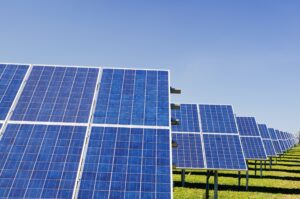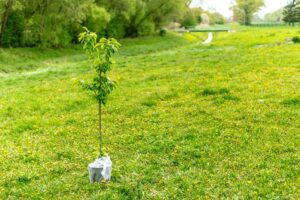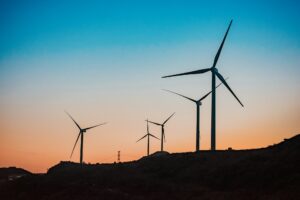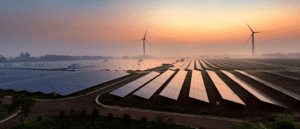Alberta 
Feds announce $11 million in funding for clean energy projects, mostly in Alberta
 Eleven clean energy projects, most of which are based in Alberta, have been selected to receive a total of $11 million in federal funding. Of the funding, $2.5 million will go to small modular nuclear reactor research at the University of Alberta and University of Regina. The remaining $8.5 million will be divided between seven Alberta companies doing work in the area of hydrogen. There are now more than 80 low-carbon hydrogen production projects currently in various stages of development, according to the federal government. The government’s own estimate pegs the economic opportunity of hydrogen development in Canada at over $100 billion. A new report from clean energy think-tank the Pembina Institute and Simon Fraser University says Canada is on track to make significant progress toward that goal thanks to government policies that are accelerating the shift to clean energy. The report gives high marks to the federal government as well as the governments of B.C. and Quebec for supporting the energy transition, but says Alberta and Saskatchewan are lagging behind.
Eleven clean energy projects, most of which are based in Alberta, have been selected to receive a total of $11 million in federal funding. Of the funding, $2.5 million will go to small modular nuclear reactor research at the University of Alberta and University of Regina. The remaining $8.5 million will be divided between seven Alberta companies doing work in the area of hydrogen. There are now more than 80 low-carbon hydrogen production projects currently in various stages of development, according to the federal government. The government’s own estimate pegs the economic opportunity of hydrogen development in Canada at over $100 billion. A new report from clean energy think-tank the Pembina Institute and Simon Fraser University says Canada is on track to make significant progress toward that goal thanks to government policies that are accelerating the shift to clean energy. The report gives high marks to the federal government as well as the governments of B.C. and Quebec for supporting the energy transition, but says Alberta and Saskatchewan are lagging behind.
Source: CTV News Edmonton
Electricity Prices for Alberta
The Alberta power pool price averaged 8.862 cents per kWh in July 2024. This price is 5.677 cents higher than last month’s average of 3.185 cents. The pool price has averaged 8.874 cents per kWh over the last 12 months.
As of August 1, 2024, the forward market was predicting electricity prices for the calendar years of 2024, 2025, 2026, 2027, 2028, and 2029. These prices are 6.355, 5.293, 5.156, 5.550, 6.250, and 6.350 cents per kWh respectively.
Gas Prices for Alberta
Direct Energy’s gas rate for July 2024 was $0.890 per GJ in Alberta. The August 2024 rate has been set at $0.936 per GJ. Alberta gas prices have averaged $2.173 per GJ over the last 12 months.
As of August 1, 2024, the forward market was predicting gas prices for the calendar years of 2024, 2025, 2026, 2027, and 2028. These prices are 1.49, 2.53, 2.87, 3.04, and 3.05 cents per GJ respectively.
British Columbia 
B.C. government blasted for ‘ultimate hypocrisy’ over PFAS and sewage sludge
The B.C. government’s lawsuit over the health impact of so-called “forever chemicals” is now shining a questionable light on the province’s effort to also overturn one of Canada’s only bans on toxic sewage sludge applied to fields and forests. Sewage sludge, or biosolids, is the solid matter produced after sewage is dried and treated for bacterial contamination. While applying sewage waste to fields and forests is a cheap way to dispose of it, there is growing alarm the practice is polluting soils and drinking water with dangerous PFAS or per-fluoroakyll substances chemicals. PFAS are a class of thousands of chemicals used in everything from cosmetics to clothing to firefighting foam. They do not break down in nature, are now found in the blood of over 98 per cent of Canadians, and cause health problems like cancer and endocrine system disruptions.
The B.C. Ministry of the Environment and Climate Change said in a statement that it “supports beneficial reuse of treated biosolids as a means for restoring carbon to soils and avoiding methane formation and loss of landfill space. “Neither Canada nor B.C. conduct regular tests to determine if biosolids contain PFAS and other toxins, or they are contaminating farmland and drinking water sources.
Source: Canada’s National Observer
Ontario 
Markham, Ontario to Build World’s Biggest Wastewater Energy Transfer System
A district energy utility north of Toronto is about to begin construction on the world’s largest wastewater energy transfer (WET) installation, a project that is expected to reduce climate pollution by 30,000 tonnes per year, significantly reduce gas consumption, and supply heating and cooling for seven to eight million square feet of space in Markham, Ontario. The utility’s Markham Downtown facility is built to serve 240 buildings, totalling about 15 million square feet. Every municipality has sewer lines, and “this is simply heat pump technology using the constant water temperature in a flow of water going by,” Markham District Energy (MDE) President and CEO Bruce Ander said. “There are some special things you need to do with that water—it’s raw wastewater, so you have to deal with it and then return it to the sewer main after you’ve exchanged the temperature—but the potential is large.” A city would need a well-developed thermal grid to repeat Markham’s experience. The key to wastewater energy recovery is to elevate the temperature to be able to use it in the heating system, but that only works with a system that relies on low-temperature hot water, as opposed to steam.
Source: The Energy Mix
Saskatchewan 
Sask. introduces battery energy storage system to improve renewable energy
 Saskatchewan’s first-ever utility-scale battery energy storage system (BESS) is now online. The system can provide up to 20 megawatts of power to the grid, which is the equivalent of powering up to 20,000 homes for one hour. Dustin Duncan, the Saskatchewan minister responsible for SaskPower said the addition of battery storage will enable SaskPower to better respond to the fluctuating demands of the province’s electrical grid. “Battery energy storage has the potential to enable and support renewable power development for years by balancing the demand for power with the availability of clean energy generation. The Regina battery energy storage system is just the first step down that road,” Duncan said.
Saskatchewan’s first-ever utility-scale battery energy storage system (BESS) is now online. The system can provide up to 20 megawatts of power to the grid, which is the equivalent of powering up to 20,000 homes for one hour. Dustin Duncan, the Saskatchewan minister responsible for SaskPower said the addition of battery storage will enable SaskPower to better respond to the fluctuating demands of the province’s electrical grid. “Battery energy storage has the potential to enable and support renewable power development for years by balancing the demand for power with the availability of clean energy generation. The Regina battery energy storage system is just the first step down that road,” Duncan said.
Source: Global News
Manitoba 
A net zero future for Manitoba through bigger, cleaner, smarter electricity
Manitoba is at a pivotal point in the transition to clean electricity. Electrification will be critical to meeting Manitoba’s climate goals and involves replacing technologies that rely on fossil fuels with ones that use clean electricity. The province is already in the process of developing long-term energy roadmaps set to be presented before the end of September to guide the work of Manitoba Hydro, the Manitoba Public Utilities Board, Efficiency Manitoba and other actors, with an emphasis on identifying near-term actions taken today to maintain a clean, affordable, reliable electricity system. The province has among the lowest utility rates and the cleanest electricity in North America, thanks to legacy investments in hydropower. In an average year, Manitoba generates up to 30 terawatt hours of electricity, with 99 per cent from non-emitting sources. By 2050, studies anticipate that electricity demand will grow by up to two times today’s levels, as Manitoba’s economy grows and continues on a path towards electrification.
Source: Energi Media
New Brunswick 
Canada and New Brunswick to Plant Over 52 Million Climate-Resilient Trees
 Together, the Government of Canada and the Government of New Brunswick will provide more than $71 million to support progressive tree planting in New Brunswick, ensuring the right trees are planted in the right places so that the province’s forests can thrive in a changing climate. With this investment, the Province of New Brunswick aims to plant over 52 million climate-resilient trees on publicly managed land: the equivalent of planting over 60 trees for each resident of New Brunswick. A $295,000 contribution for the New Brunswick Environmental Network (NBEN), which will use the funding to educate and train individuals and organizations on seed collection, tree planting and restoration techniques.
Together, the Government of Canada and the Government of New Brunswick will provide more than $71 million to support progressive tree planting in New Brunswick, ensuring the right trees are planted in the right places so that the province’s forests can thrive in a changing climate. With this investment, the Province of New Brunswick aims to plant over 52 million climate-resilient trees on publicly managed land: the equivalent of planting over 60 trees for each resident of New Brunswick. A $295,000 contribution for the New Brunswick Environmental Network (NBEN), which will use the funding to educate and train individuals and organizations on seed collection, tree planting and restoration techniques.
The NBEN will collaborate with local nurseries to grow native and climate-resilient seedlings from collected seeds. These services will be available to tree-planting organizations and landowners in New Brunswick. A $33,000 contribution for the Petitcodiac Watershed Alliance to work with local communities in identifying and caring for tree-planting sites in the City of Dieppe. This project has empowered local community tree-planting initiatives by transferring knowledge through staff and volunteer training, which resulted in 2,000 new trees being planted in Dieppe in 2023. Federal funding comes from the 2 Billion Trees program, part of the Government of Canada’s broader approach to nature-based climate solutions. Trees planted help to clean the air, keep neighborhoods cool in the summer, create jobs and fight climate change while protecting nature.
Source: Government of Canada
Prince Edward Island 
P.E.I. sees ‘exponential growth’ in solar energy production
At the beginning of 2024, most solar energy production on P.E.I. came from the rooftops of people’s homes, but that has changed dramatically. Two large-scale solar farms, Summerside’s Sunbank and the Slemon Park Microgrid, have come fully online since then, and P.E.I. is suddenly producing more than twice as much solar energy as it was. P.E.I. Energy Corporation runs the microgrid, which can push up to 10 megawatts of power into the Maritime Electric system. Sunbank, owned by the City of Summerside and supplying Summerside Electric, is a 21.6 MW facility. Rooftop solar generation in 2023 was 39 MW, about four times what it was two years earlier. The larger farm at Sunbank builds on a renewable energy tradition in Summerside, which already produces a significant amount of electricity from wind. “Both solar and wind are at the mercy of the weather, but by diversifying the system and having a combination of both types of renewable energy we believe it makes our system stronger,” said Sam Arsenault, renewable energy production supervisor for the City of Summerside. The storage system at Sunbank can also be used to capture excess wind power generated by the city. These two new facilities will allow the province to explore the most cost-effective ways of using storage for weather-dependent systems.
Source: CBC
Québec 
Montreal-based organizations working on carbon removal
The Canadian government is keen on achieving net-zero carbon emissions by 2050, and many in Montreal are taking it seriously. Experts believe that simply achieving net zero will not be enough. The damage that has already been done needs to be reversed. One Montreal-based company, Deep Sky, is working on carbon removal to extract carbon from the atmosphere and store it underground. According to the Deep Sky website, humans have released 819 billion tons of carbon dioxide into the atmosphere in the past 150 years. The website adds that once carbon dioxide has been emitted, it takes 10 to 50 years before impacting the environment, meaning that today’s climate change-related environmental consequences are due to emissions from generations ago. The cost of electricity is also a huge consideration. This is a big reason why Deep Sky wants to build a carbon storage facility in the Bécancour region of Quebec, which is also known for its abundant renewable power and underground space for sequestration. The region is already getting significant investment from the Quebec government for electric vehicle battery production. Carbon removal is not the only solution, carbon emissions must also be reduced.
Source: CTV News Montreal
Newfoundland and Labrador 
Appealing the mega-destruction of wind-to-hydrogen
 Residents appealed the province’s decision to release the controversial Port-au-Port-Stephenville wind-to-hydrogen project from environmental assessment. But their concerns were dismissed. the provincial government gave World Energy GH2 the go-ahead to proceed with its controversial and unprecedented wind-to-hydrogen megaproject on the island’s southwest coast. Already the impacts are being felt. If built, the project would see hundreds of massive wind turbines scattered across the Port au Port Peninsula and Codroy Valley, generating energy to power a plant in Stephenville to produce hydrogen for export. As our society finally decides to try to decarbonize and limit global warming, and in light of rural Newfoundland’s need for jobs, political leaders may have thought the introduction of a so-called “green energy” industry in the province would be welcomed. Instead, this precedent-setting mega-project has drawn strong opposition not only from the local communities affected but from other experts and citizens across the province and beyond.
Residents appealed the province’s decision to release the controversial Port-au-Port-Stephenville wind-to-hydrogen project from environmental assessment. But their concerns were dismissed. the provincial government gave World Energy GH2 the go-ahead to proceed with its controversial and unprecedented wind-to-hydrogen megaproject on the island’s southwest coast. Already the impacts are being felt. If built, the project would see hundreds of massive wind turbines scattered across the Port au Port Peninsula and Codroy Valley, generating energy to power a plant in Stephenville to produce hydrogen for export. As our society finally decides to try to decarbonize and limit global warming, and in light of rural Newfoundland’s need for jobs, political leaders may have thought the introduction of a so-called “green energy” industry in the province would be welcomed. Instead, this precedent-setting mega-project has drawn strong opposition not only from the local communities affected but from other experts and citizens across the province and beyond.
Source: The Independent
Nova Scotia 
Nova Scotia Races For Coal Exit Amid Billions in Costs and Energy Challenges
Nova Scotia has less than six years to shed its centuries-long dependence on coal, a deadline that comes with a price tag in the billions of dollars. Meanwhile, continuing to burn coal has become not only untenable in a rapidly warming world, but also unaffordable as prices of the dirty fuel skyrocket. Today, renewable sources like wind and imported hydroelectricity make up 43% of NS Power’s energy mix. Coal and petcoke still account for 36% of the total, down from 60% 20 years ago, which gives the utility bragging rights to “one of the fastest transitions to green energy” in Canada. As the province prepares to add a total of 1,500 megawatts of wind energy to the grid, the Point Tupper coal-fired generating station will be converted to gas to avoid future power outages. A few other coal-fired units will be permitted to burn heavy fuel oil as back-up during storms and emergencies well past 2030. As for Nova Scotia’s long-term goal of reaching net-zero emissions by 2050, potential components include the development of offshore wind turbines and hydrogen fuel to replace gas at one coal-fired power plant. Both emerging technologies are dependent on governments establishing regulations so they can co-exist without harm to fisheries.
Source: The Energy Mix
Nunavut 
Federal government invests $19M in Nunavut renewable energy projects
The Government of Canada announced over $19 million in federal funding for three clean energy projects that will increase renewable energy generation in Rankin Inlet, Baker Lake, and Naujaat, Nunavut. Funding will support the construction of a 1.0 + megawatt solar and battery energy storage facility in Naujaat, which currently relies entirely on diesel to meet its electricity needs. This new facility will supply 30 per cent of the community’s electricity demand with locally-produced renewable energy. The federal government is also providing funding for early-stage work on three solar installations on buildings owned by Sakku Properties Ltd., a subsidiary of Sakku Investments Corporation, in Rankin Inlet. The systems will result in 300kW of installed generation capacity, which would reduce diesel and greenhouse gas emissions by more than 56,000 litres and 178,000 kilograms each year. The systems are expected to generate solar power for the community by 2025. Funding is also being provided for the Baker Lake and Rankin Inlet Wind Energy Development Projects to undertake research and development of wind energy generation to reduce the communities’ reliance on diesel. They will incorporate traditional Inuit knowledge into community input-driven wildlife studies for wind development in northern Canada while supporting local labour, capacity building, training and economic development.
Source: ReNew Canada
Northwest Territories 
Diamond mine builds NWT’s largest off-grid solar plant
 Rio Tinto says it has finished building a solar power plant at the NWT’s Diavik diamond mine that will generate a quarter of its electricity during closure. According to a news release, the facility’s 6,620 solar panels will generate about 4,200 MWh of electricity annually, cutting Diavik’s yearly diesel consumption by a million litres – equivalent to reducing CO2 emissions by 2,900 tonnes. The bifacial panels – in other words, both sides of the panel can generate power – will “not only generate energy from direct sunlight, but also from the light that reflects off the snow that covers Diavik for most of the year,” Rio Tinto stated. The project received $3.3 million through the GNWT’s Large Emitters GHG Reducing Investment Grant, another name for a fund that’s financed by setting aside a share of the NWT carbon tax diamond mines pay. Since 2012, Diavik has operated a wind power plant that to date has generated more than 195,000 MWh of electricity.
Rio Tinto says it has finished building a solar power plant at the NWT’s Diavik diamond mine that will generate a quarter of its electricity during closure. According to a news release, the facility’s 6,620 solar panels will generate about 4,200 MWh of electricity annually, cutting Diavik’s yearly diesel consumption by a million litres – equivalent to reducing CO2 emissions by 2,900 tonnes. The bifacial panels – in other words, both sides of the panel can generate power – will “not only generate energy from direct sunlight, but also from the light that reflects off the snow that covers Diavik for most of the year,” Rio Tinto stated. The project received $3.3 million through the GNWT’s Large Emitters GHG Reducing Investment Grant, another name for a fund that’s financed by setting aside a share of the NWT carbon tax diamond mines pay. Since 2012, Diavik has operated a wind power plant that to date has generated more than 195,000 MWh of electricity.
Source: Cabin Radio
Yukon 
Climate change, energy and green economy
The Government of Yukon continues to advance on its commitments under Our Clean Future. The expansion of a biomass district heating system at the Whitehorse Correctional Centre is underway and anticipated to be complete in the summer of 2024. This project is estimated to reduce greenhouse gas emissions by 270 tonnes per year. Construction of a biomass district heating system in Haines Junction will heat the Haines Junction grader station and the Administration Building that houses the public library, Yukon University and the liquor store. This system is estimated to reduce greenhouse gas emissions by 73 tonnes each year.
The Government of Yukon is also working with Yukon First Nations to support renewable energy projects across the territory through the Arctic Energy Fund and Investing in Canada Infrastructure Program funding. The $17.7 million Kluane Wind Farm project is scheduled for completion in summer 2024 and is expected to offset approximately 170,000 litres of diesel per year. The $19.1 million Beaver Creek Solar Farm project is under construction and is scheduled to be complete in fall 2024. This project is expected to offset 55 per cent of the community’s diesel consumption.
Source: Government of Yukon